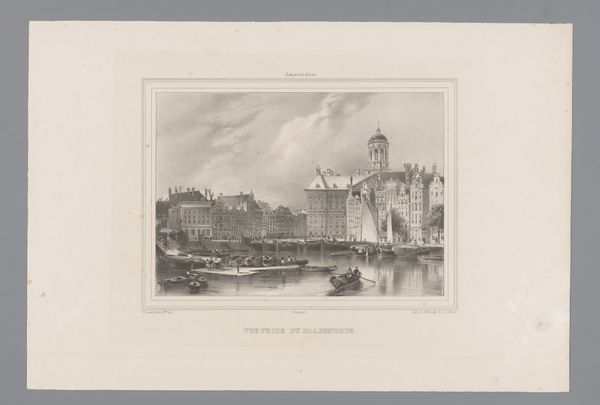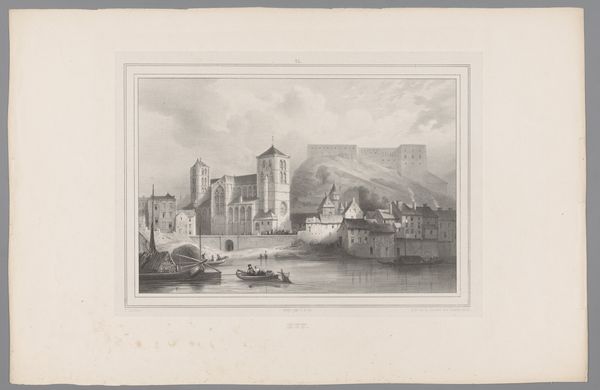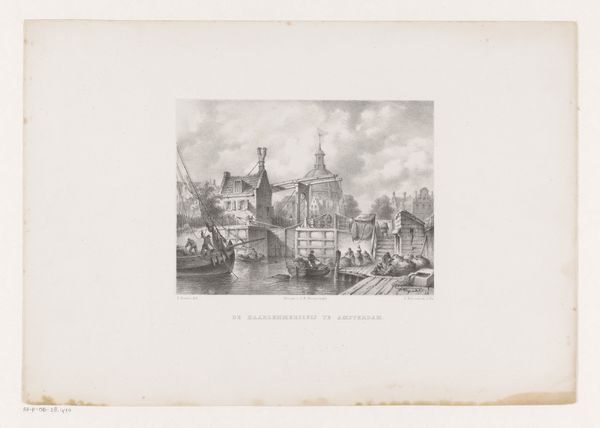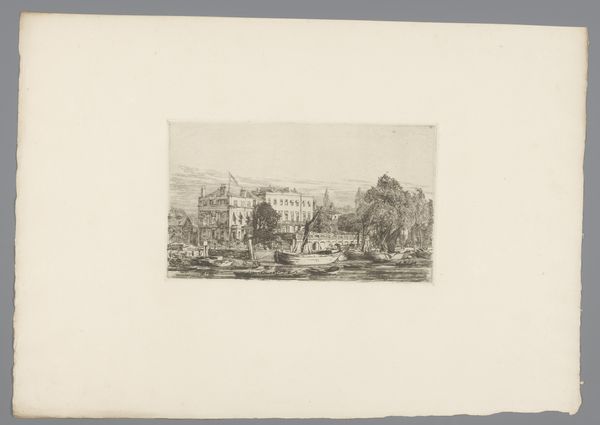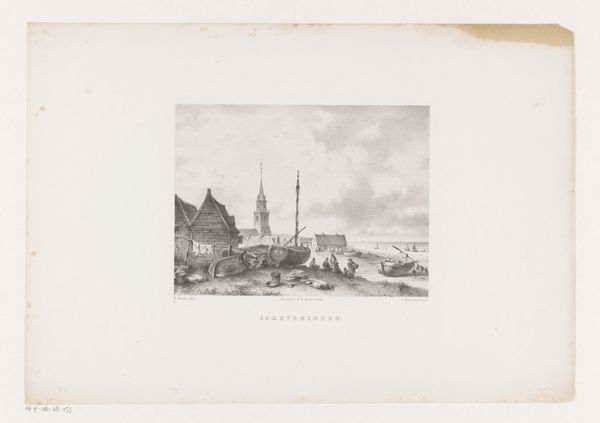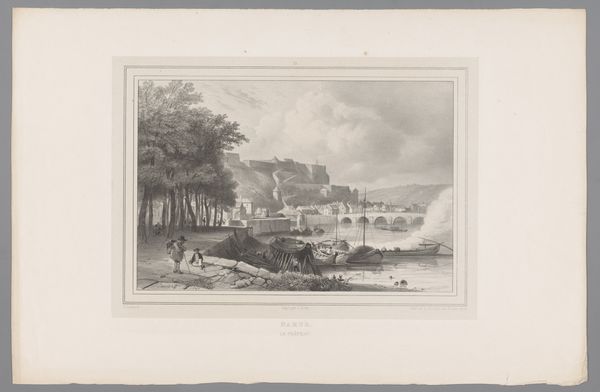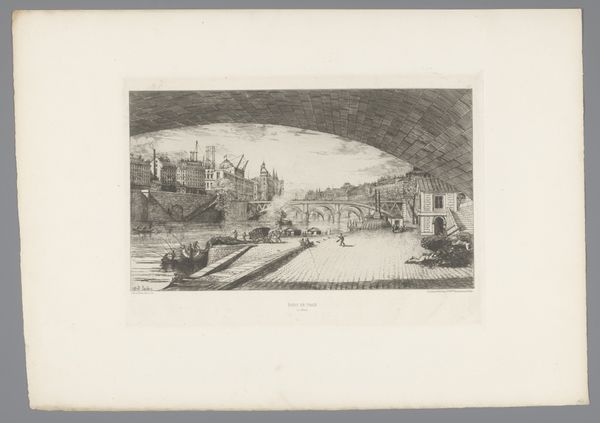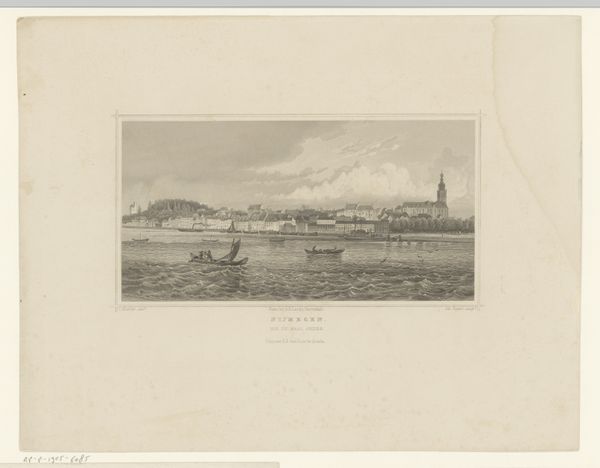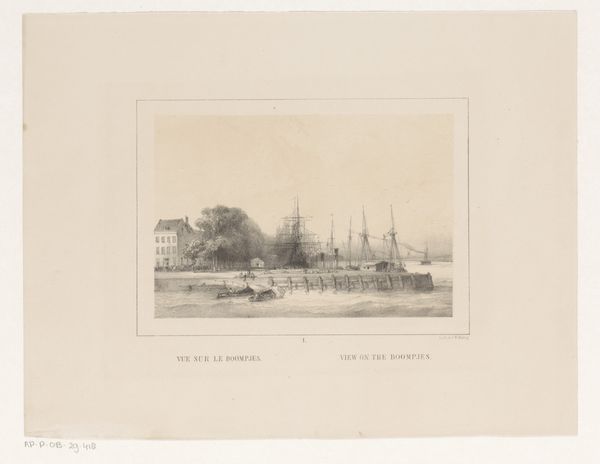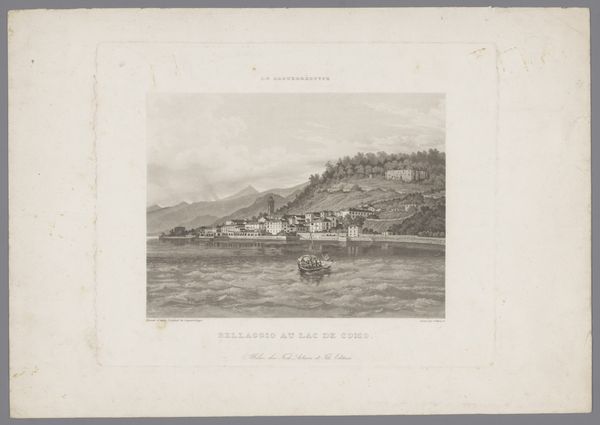
print, engraving
#
neoclacissism
# print
#
landscape
#
river
#
engraving
Dimensions: height 255 mm, width 362 mm
Copyright: Rijks Museum: Open Domain
Otto Baron Howen made this print of the confluence of the rivers Sambre and Meuse sometime in the early 19th century. It’s an etching, meaning the artist carefully drew an image onto a copper plate with a sharp needle, then bathed the plate in acid to bite away the exposed lines. The resulting incised image was then inked, and printed onto paper. This painstaking process allowed Howen to create a highly detailed image, full of fine lines and subtle gradations of tone. The material of the print, paper, also influences its appearance. It provides a stark contrast to the delicate lines of the etching. Prints like this one were part of a booming industry in the 19th century, as advancements in printmaking allowed for the mass production of images. This made art more accessible to a wider audience, but it also meant that skilled printmakers like Howen were often working in the service of commercial interests. So next time you look at a print, remember the skill and labor that went into its making, and consider how it reflects the social and economic forces of its time.
Comments
No comments
Be the first to comment and join the conversation on the ultimate creative platform.
